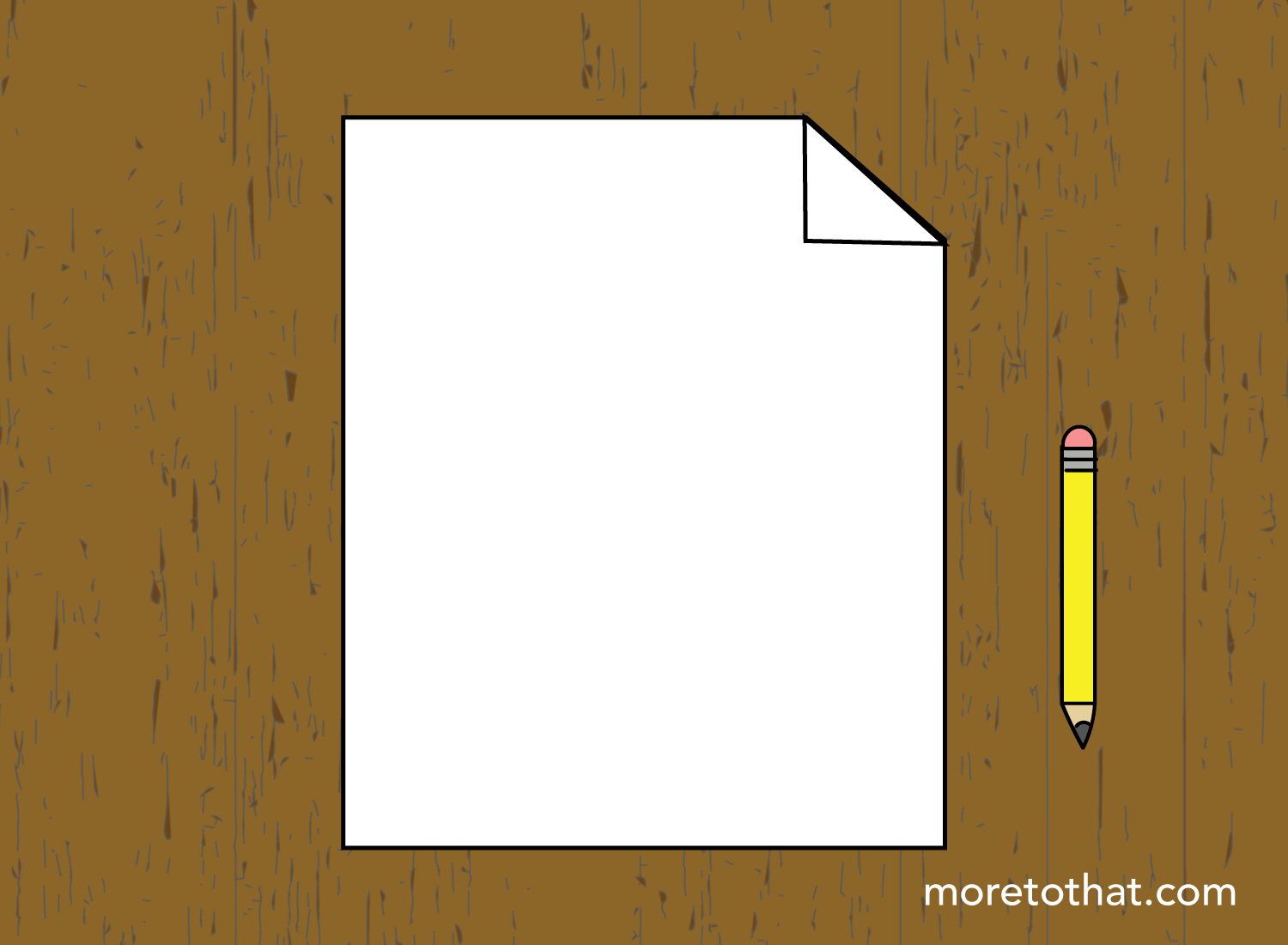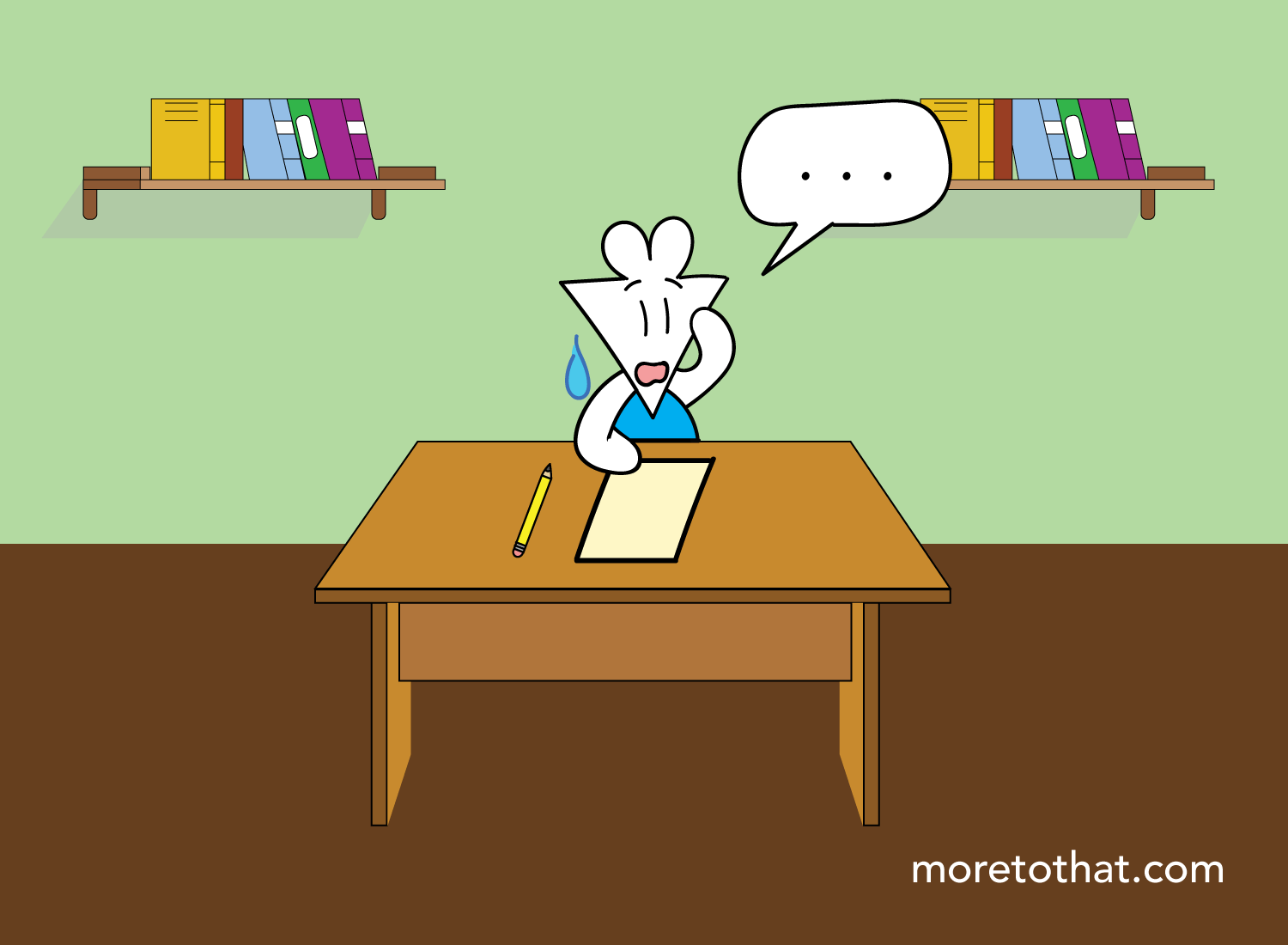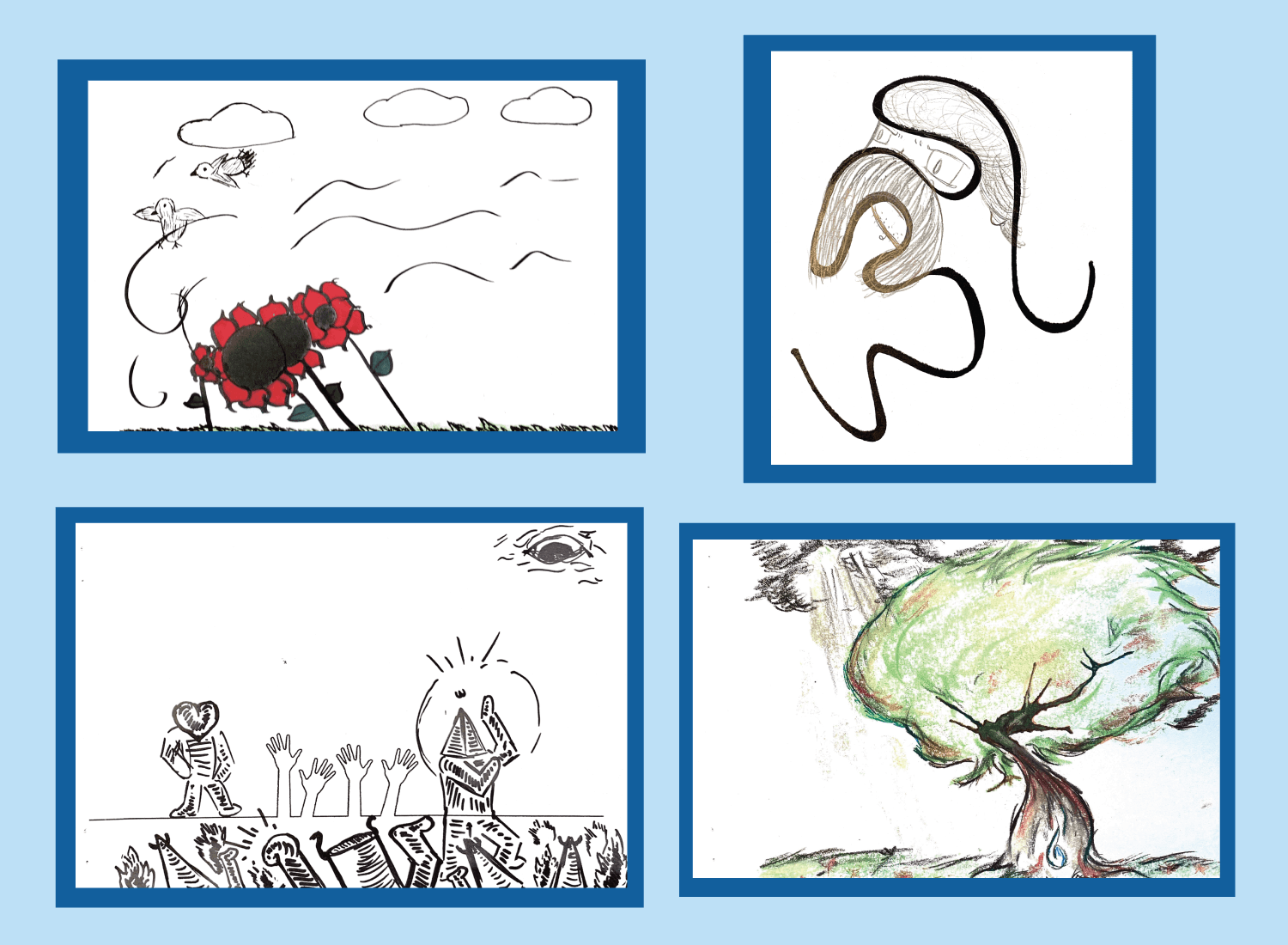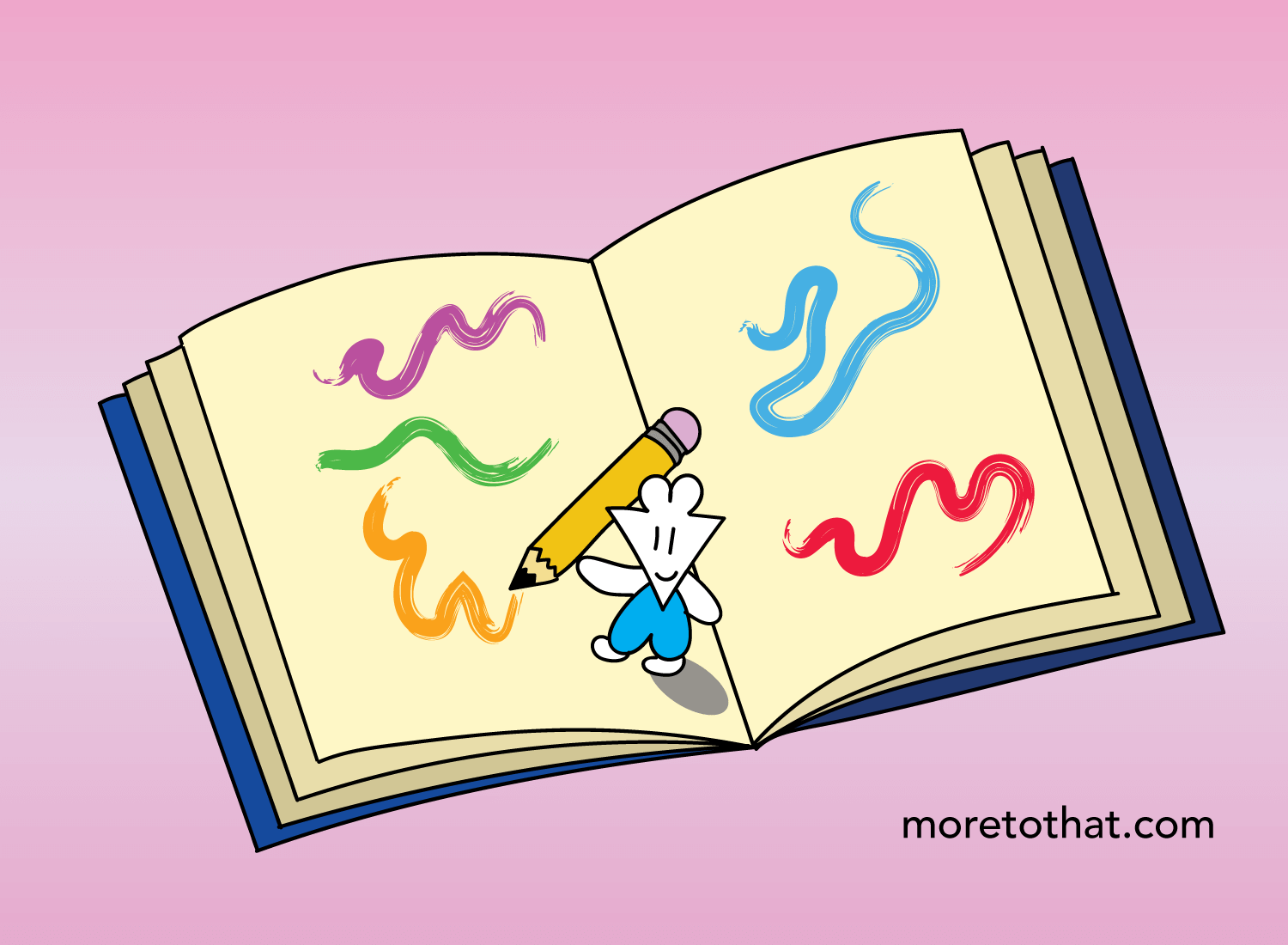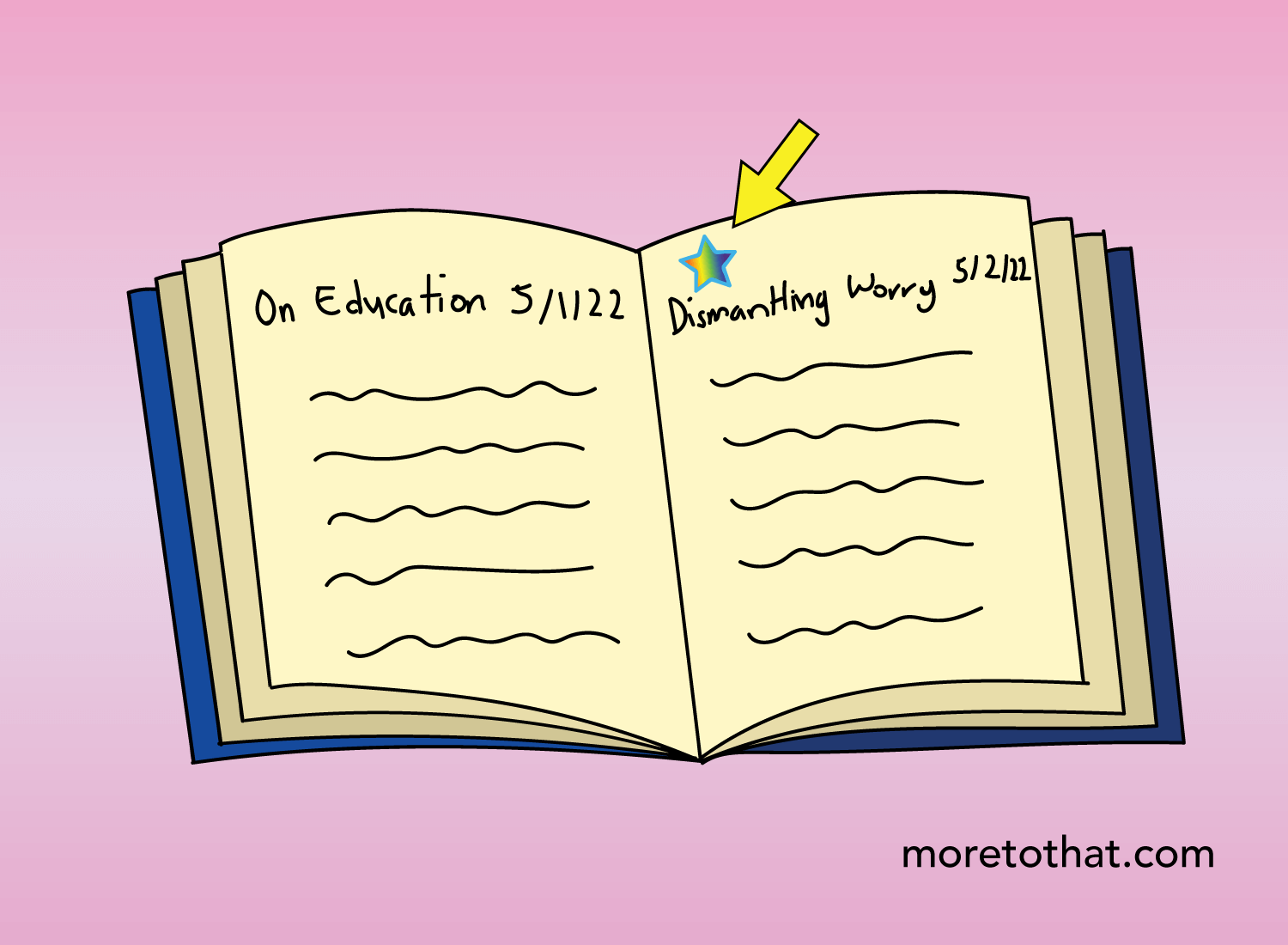The Mind Scribble: Solving the Blank Page Problem
My wife was an arts teacher for 8 years. During this time, she taught thousands of students across all ages: from hyper kindergarteners all the way to serene grandparents.
While her student demographic shifted quite a bit, she noticed that the biggest creative roadblock they faced was a common one. This roadblock could care less about how old you are, how experienced you may be, or how many times you’ve faced it before. It will reveal itself at the start of any endeavor, and you’ll have no choice but to confront it throughout your life.
That roadblock is the daunting blank page.
You could have all the tools you need to create something, but the blankness of a canvas can nullify their utility. It’s as if the page is daring you to make something out of it; prodding you to give the best of what you have to offer.
And oftentimes, the blank page makes you believe that there’s not much to offer after all.
My wife observed this problem time and time again, and saw how it stifled her students’ creativity from the beginning. It didn’t matter how many pencils or brushes she laid out on the table – the silence of a blank page was often too deafening. She tried giving them prompts to provide some direction, but for many of them, even that was too difficult of a starting point.
So one day, she decided to do something different.
Instead of placing a blank page on her students’ desks, she made a slight adjustment. On each paper, she put a scribble or doodle that took up a portion of the sheet. Some were as simple as a few lines, while others were blots or weird shapes that she found interesting. Regardless of what it was, the goal of these scribbles were simple:
To add a flicker of noise to the silence.
The result of this small addition was dramatic.
As an icebreaker exercise, she set a two-minute timer and had each student build upon the scribble that was on the page. That was the only prompt; the student was free to draw whatever they wanted.
But now that they had a starting point, it was so easy to pick up the pencil and expand upon it. Sometimes the scribble would be interpreted as a facial feature, so an interesting figure would be drawn by the end of the quick session. Other times it would take on the form of a tree or something else in the natural world.
And that’s not all. The coolest part is what my wife had them do next.
At the end of the two minutes, she would then have the student pass their page to the person on their left. As a result, a new starting point was presented for each student, which they were going to expand upon for the next two minutes. They would go on to do this a few more times, and when the page was eventually returned to the first student, they would often be amused at just how much the drawing had evolved and changed.
That’s the power of adding one small scribble to a blank page. It lowers the psychological barrier of getting started, and once you build upon it, that result becomes the starting point for another person’s creativity as well.
As you can imagine, there’s a strong parallel here with writing.
Writers’ block can be attributable to a number of things, but its greatest culprit is the belief that there’s nothing to write about in the first place. When you couple this fear with the reality of a blank page, a unique form of paralysis can ensue.
So in order to introduce sensation back into the mind, you’ll have to prod it with something to dispel the numbness. And one reliable way to do this is to give yourself a thread to pull on, which you can slowly unravel as you continue writing about it.
This starting point is what I refer to as a Mind Scribble.
In the same way that my wife placed a scribble on every page to kickstart her students’ creative process, you can do the same for any blank document when you sit down to write. The goal is to start small, and to make it easy. You don’t need to have your piece outlined before you write; no, the act of writing is where you do most of the thinking anyway.
Here are some of the Mind Scribbles I use to combat the blank page:
(1) Write down some titles for a potential piece, and see where that takes you.
When I sit down to do a reflection, I often have no clue what I’m going to write about. All I know is that there’s something in my mind that needs to be harvested, and my desire to discover it will be fulfilled after a session comes to an end.
But instead of staring at a blank page, I’ll simply start writing out a bunch of titles that can act as starting points for my thoughts. The beauty of this approach is that a title often contains the problem you want to address in your piece, or the takeaway that you want to deliver by its end. By writing a bunch of them out, you’re creating a small menu of themes you can choose from, and you can simply pick which one you want to play with after this exercise.
For example, this entire reflection is the result of me writing these four words after I opened up a new document:
That was the scribble I needed to attach my thoughts onto. It was the thread I was going to pull on for the next hour or two. Even if I didn’t know exactly what was going to come out, I knew exactly what I was going to address in my piece.
Don’t put too much thought into these titles – you can even a set a 2-minute timer and write whatever comes to mind. The goal is to unearth some of the problems and takeaways that live just below the surface, and to do it without the pressure of having to start from a blank slate.
(2) Write down an interesting quote, and tell yourself what you think about it.
Chances are, my suggestion to write down titles may be difficult to do. After all, that requires you to delve inward to extract an idea that sounds interesting, and much of writers’ block comes from the belief that you have no interesting take to offer. While that’s a false premise, I understand the predicament.
In that case, you can instead look outward for your Mind Scribbles, which removes the pressure you put on yourself to find something worth writing about. The resource pool you can draw upon is endless (books, podcasts, essays, videos, etc.), and you also have the added bonus of distancing yourself from the source. It’s a low-stakes way to give yourself a starting point for whatever you want to contribute your thoughts to.
The easiest way to do this is to jot down a quote you find interesting, and then write down what you think about it.1 What are some ways you’ve seen that quote play out in your life? What’s a story that either proves or disproves its message? What made you highlight it in the first place? If you had to take the position of someone who disagreed with the quote, what would you say?
Those are some good guiding questions to get you started. Using a quote as a Mind Scribble is one of the easiest ways to get your thoughts moving, and is a reminder that you’re not just a consumer of information. Specific quotes resonate for a reason; you highlight them because they represent a kernel of wisdom that aligns with the richness of your life experience.
Tell us how exactly it did that. You never know who could benefit from your words the most.
(3) Journal regularly to unearth a ton of Mind Scribbles.
The greatest gift a journal offers is the knowledge that you won’t be publishing anything in it. You can give yourself permission to be nonsensical, to be repetitive, to be vulnerable. And when you know that no one is watching, your subconscious is given the freedom to roam.
A journal allows you to anchor that subconscious to something tangible. Instead of drifting aimlessly in a vast ocean, you’re creating a brief log that shows where you’ve meandered to at the end of each session. And by revisiting these logs from time to time, you’ll unearth many Mind Scribbles with each review.
With that said, here’s one important disclaimer: When you journal, don’t view it as an opportunity to discover new ideas. Because the moment you enter the exercise with that lens, you put pressure on yourself to “make something” out of that session. That puts you right back at the problem you were trying to solve in the first place, which was the paralysis that results from facing a blank page.
Instead, view it as a brief window of time where there is no agenda to what you write. Let the inertia of the moment guide what you put down on the page, and nothing else. There is no objective to fulfill, no expectation to satisfy.
Most of the time, you’ll conclude the session feeling like you just vomited a bunch of thoughts, which is the whole point. But sometimes, you’ll feel like you just pulled on a thread that may be worth exploring further. Perhaps you jotted down a thought about an interesting experience you had that day, or you explored an emotion you were grappling with at that precise moment.
When I finish an entry feeling like I could expand upon it further, I simply place a star on the page or earmark it for later. This is a minority of entries (less than 10% of them make any sense, which is perfectly fine), but given that I journal everyday, that leads to a nice little pile of Mind Scribbles that I can draw upon for later.
Over time, what you’ll notice is that there are certain topics you touch over and over again in your journal. These recurring themes are important to identify because they signal that you’ve thought a lot about them. Don’t worry if you think they’re too boring to elaborate on because you’ve visited them so much. What feels repetitive to you will be novel to another, so use that to your advantage when choosing the themes you want to share with others.
In the end, you’ll develop your own ways of cultivating Mind Scribbles. The above three are my own reliable methods, but there’s a near infinite array of options you can choose from to overcome the blank page. No matter what strategy you use, the goal is to lower the psychological barrier that prevents you from putting a word down in the first place.
The pain of writing is usually at the starting line, where self-doubt is at its highest. But as you edge onward, the energy of self-doubt shifts into that of confidence, and it is only here where time dissipates and curiosity rises to the forefront.
To write is to think, and thought is at its brightest when you surprise yourself as you write. This chain of pleasant surprise is what makes the process fun, and the Mind Scribble is a simple way to offer its opening link.
_______________
_______________
Related Posts
Now that you have a starting point, here’s how to build your story:
The Ultimate Guide to Visual Storytelling
If you build upon a Mind Scribble for one hour, you’re ahead of most people out there:
Create for Just One Hour a Day
When journaling, keep in mind that you’re using Fluid Thought, not Focused Thought:
